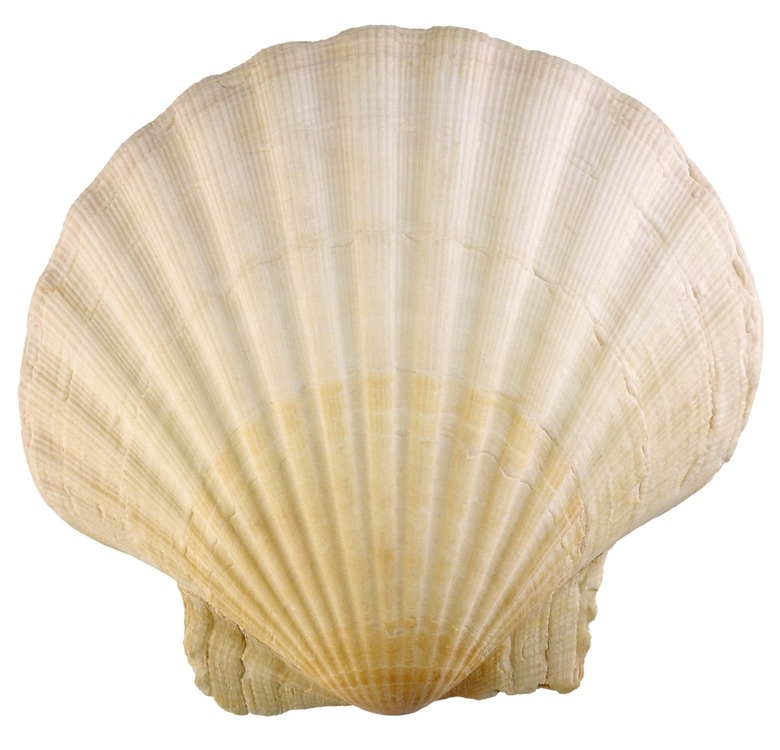What Do Sea Scallops Eat & Where Do They Live?
Artists and craftsmen have always liked scallop shells. The shells are symmetrical and attractive, the archetypical fan-shaped shell that we sometimes see used for sinks and soap dishes in the bathroom. The living scallop is classified as a marine bivalve mollusk (like clams and oysters), from the family Pectinidae, and it is found in every ocean in the world.
Plankton
Plankton
Scallops have up to one hundred simple eyes that see light and dark passing by. This alerts scallops to danger as well as assists scallops in grabbing food. Scallops eat plankton; but the term "plankton" refers to a lot of different things. The Greek word "planktos" just refers to anything that drifts. Plankton means food that drifts through the water. That includes krill, microorganisms, algae, flagellae and larvae, including scallop larvae. The scallops use built-in siphons to pull water over mucus membranes that trap the plankton and then hair-like scilia transfer the trapped food into the scallop's mouth.
Scallop Habits and Habitats
Scallop Habits and Habitats
If there is one thing scallop habitats have in common around the world it is vegetation. Scallops like sea grasses. The various species of scallop are adapted to different temperatures and light conditions, and the majority of scallop species are capable of rapid locomotion, so they can migrate to remain in temperatures that are most habitable. Sea grasses in mild currents both protect fertilized eggs and larva and provide adequate distribution of the eggs and larvae to ensure species survival.
Scallops Worldwide
Scallops Worldwide
Species of scallop can be found in almost any temperate or tropical ocean. The Icelandic scallop can even be found in sub-arctic conditions. The most numerous scallop species are found in the Atlantic Ocean, especially along the Eastern United States and Canada. Other large scallop fisheries are found in the Sea of Japan and off the coasts of Peru and Chile in the Pacific Ocean. Ireland and New Zealand also have significant scallop fishing industries. China produces large quantities of scallops, but using mostly aquaculture, which is not a natural scallop habitat, but scallop farms.
Shrinking Habitat
Shrinking Habitat
Scallops are a very popular seafood. Unfortunately, the demand for scallops has led to worldwide overfishing. Many scallop fisheries have collapsed in recent decades leading up to 2011 and many more are threatened. Bottom trawling, a method of catching scallops, has created the greatest stress on scallop fisheries. Fishermen drag large trawl-nets across the bottom of the ocean floor, scooping everything in their paths. Scalloping in this way not only takes away large numbers of scallops, reducing the breeding population, but it also destroys the habitats. Another cause of scallop depopulation has been overfishing of sharks. Sharks prey on mantas, which prey on scallops. With fewer sharks, more mantas remain to prey on more scallops.
Cite This Article
MLA
Goff, Stanley. "What Do Sea Scallops Eat & Where Do They Live?" sciencing.com, https://www.sciencing.com/sea-scallops-eat-live-11403672/. 24 April 2017.
APA
Goff, Stanley. (2017, April 24). What Do Sea Scallops Eat & Where Do They Live?. sciencing.com. Retrieved from https://www.sciencing.com/sea-scallops-eat-live-11403672/
Chicago
Goff, Stanley. What Do Sea Scallops Eat & Where Do They Live? last modified March 24, 2022. https://www.sciencing.com/sea-scallops-eat-live-11403672/
